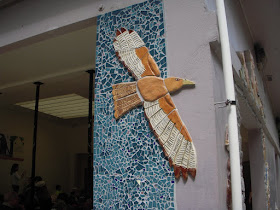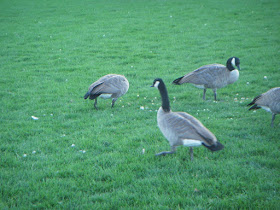

This lovely, wrinkly
plastic hippo has been with us for quite some time. Its part number (F158) means that it was only the 158th item we put online in our gift shop - not counting tapirs, which have their own numbering system - or did in the beginning, anyway. Just guessing, I would say that the hippo's web page had been around with only a few changes since about 1997 or 1998.
Today Carolyn wrote new text for our friend the hippo, and I
updated the page structure. Since we are all about the animals, we like to include something everyone can all learn from. I know I learned new things reading it! Here's the new info. We hope you enjoy it!
Our adorable plastic hippo measures 5 inches long from nose to tail. Notice the detailing of our hippo’s flat, paddle-like tail, feet with its webbed toes and thick skin which is virtually hairless. The texture and skin coloring of our hippo give it a realistic quality. Our plastic hippo is perfect for your diorama or for play in your imaginary African river or Safari scene. Our plastic hippo plays well with others and is low maintenance with no feeding or clean up required! See our other plastic
African Safari animals in the various categories on our home page. We also have African animals on our
Stuffed Animal page. This toy or model hippo is hollow and light weight, and therefore less likely than a heavier toy to break or damage items if thrown by small children. It will also float.
About Hippos
The hippopotamus (
Hippopotamus amphibius), or hippo, from the ancient Greek for "river horse", is a large, mostly herbivorous mammal in sub-Saharan Africa, and one of only two extant species in the family Hippopotamidae (the other is the pygmy hippopotamus). The hippopotamus is the third largest land animal (after the elephant and the white rhinoceros) and the heaviest, despite being considerably shorter than the giraffe. The hippopotamus is recognizable by its barrel-shaped torso, enormous mouth and teeth, nearly hairless body, stubby legs and tremendous size. Despite its stocky shape and short legs, it can easily outrun a human. Hippos have been clocked at 19 mph over short distances. The hippopotamus is one of the most aggressive creatures in the world and is often regarded as one of the most dangerous animals in Africa. There are an estimated 125,000 to 150,000 hippos throughout Sub-Saharan Africa; Zambia (40,000) and Tanzania (20,000-30,000) possess the largest populations. Hippos are still threatened by habitat loss and poaching for their meat and ivory canine teeth. A hippo's lifespan is typically 40 to 50 years. Donna the Hippo, 57, is the oldest living hippo in captivity. She lives at the
Mesker Park Zoo in Evansville, Indiana. The oldest hippo ever recorded was called Tanga; she lived at
Tierpark Hellabrunn in Munich, Germany, and died in 1995 at the age of 61.
Hippos spend most of their days wallowing in the water or the mud, with the other members of their pod. The water serves to keep their body temperature down, and to keep their skin from drying out. With the exception of eating, most of hippopotamuses' lives - from childbirth, fighting with other hippos, and reproduction - occur in the water.
Hippos leave the water at dusk and travel inland, sometimes up to 5 miles, to graze on short grass, their main source of food. They spend four to five hours grazing and can consume 150 pounds of grass each night. Like almost any herbivore, they will consume many other plants if presented with them, but their diet in nature consists almost entirely of grass, with only minimal consumption of aquatic plants. Hippos have (rarely) been filmed eating carrion, usually close to the water. There are other reports of meat-eating, and even cannibalism and predation. The stomach anatomy of a hippo is not suited to carnivory, and meat-eating is likely caused by aberrant behavior or nutritional stress.
The diet of hippos consists mostly of terrestrial grasses, but they spend most of their time in the water. Most of their defecation occurs in the water, creating
allochthonous deposits of organic matter along the river beds. These deposits have an unclear ecological function. Because of their size and their habit of taking the same paths to feed, hippos can have a significant impact on the land they walk across, both by keeping the land clear of vegetation and depressing the ground. Over prolonged periods hippos can divert the paths of swamps and channels.
Adult hippos typically resurface to breathe every 3 to 5 minutes. Adult hippos cannot swim and are not buoyant. When in deep water, they usually propel themselves by leaps, pushing off from the bottom. They move at speeds of up to 5 mph in water. However, young hippos are buoyant and more often move by swimming - propelling themselves with kicks of their hind legs. Adult hippos typically resurface to breathe every 3 to 5 minutes. The young have to breathe every two to three minutes. The process of surfacing and breathing is automatic, and even a hippo sleeping underwater will rise and breathe without waking. A hippo closes its nostrils when it submerges.
 Just how cute is a hermit crab? We learned the answer today when one of our customers received hers in the mail. She made our day! She wrote:
Just how cute is a hermit crab? We learned the answer today when one of our customers received hers in the mail. She made our day! She wrote:



































